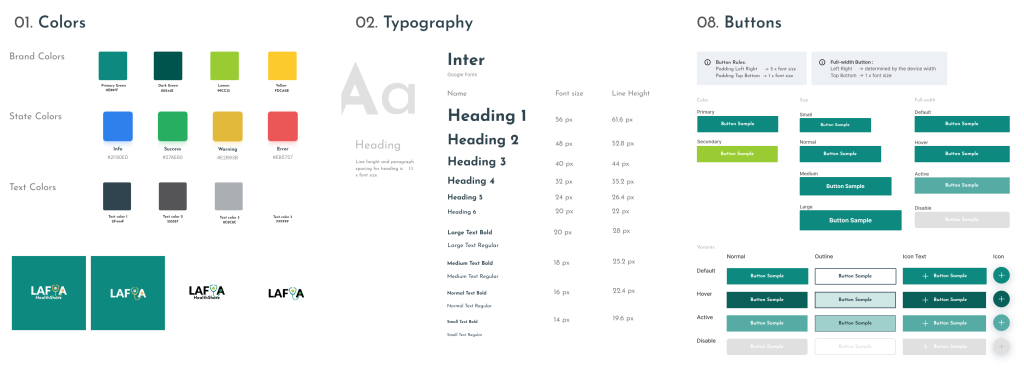Lafya – A Health Financing Platform
Health & Fintech
Lafya – A Health Financing Platform
Lafya HealthShare is a digital health savings wallet aimed at making healthcare financing accessible and transparent for individuals and organizations in Nigeria. The challenge was to design a platform that simplifies health savings, builds trust, and provides a seamless experience for both individuals and businesses.
Work
UI Design, User Experience Design, User Research, Wireframing, Afinnity Diagram, Usability Testing, Crazy 8’s method, Sketching
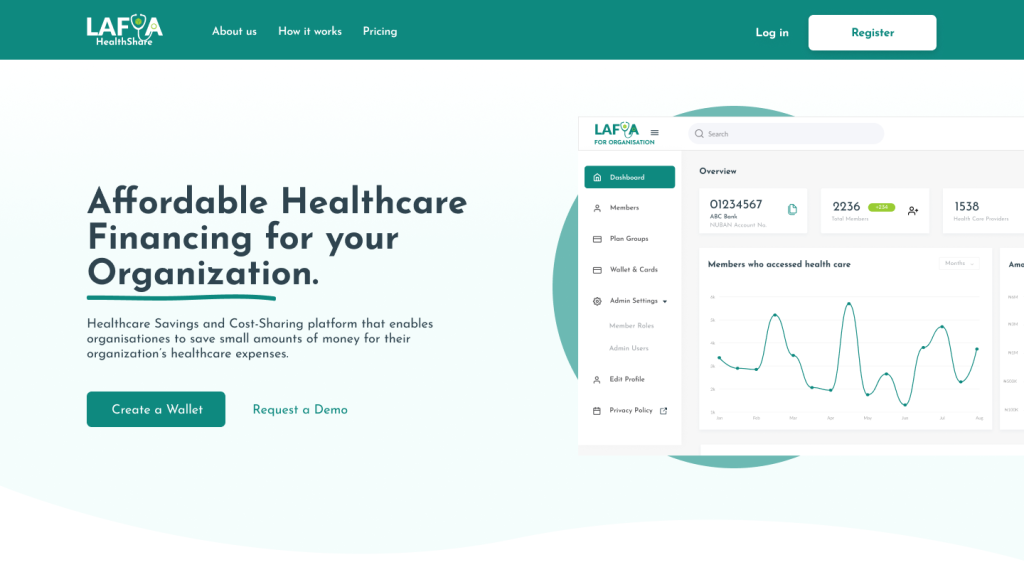
Problem Statement
How might we create a user-friendly digital solution that enables Nigerians to save for healthcare, access affordable medical services, and manage health expenses efficiently?
Research Plan
1. Research Objectives
Understand the pain points, motivations, and behaviors of individuals and organizations regarding healthcare savings and financing in Nigeria.
Identify barriers to adoption and trust in digital health savings platforms.
Discover usability expectations and feature preferences for both individual and organizational users.
Gather insights to inform product features, information architecture, and visual design.
2. Research Questions
What are the current methods users employ to save for healthcare expenses?
What challenges do users face with existing health insurance or savings solutions?
What factors influence trust in a digital health savings platform?
What features do users consider essential for managing health savings?
How do organizations currently manage employee healthcare benefits?
What are the usability expectations for mobile and web platforms?
3. Methodology
a. Qualitative Methods
User Interviews:
10–15 in-depth interviews with individuals (ages 18–45, diverse backgrounds).
5–8 interviews with HR managers or business owners.
Semi-structured format to allow for open-ended responses.
Contextual Inquiry:
Observe users as they interact with current solutions (apps, insurance portals, manual savings).
Competitor Analysis:
Review and benchmark similar platforms (local and international).
b. Quantitative Methods
Online Surveys:
Distribute to a broader audience (target: 100+ responses).
Questions on savings habits, trust, digital literacy, and feature preferences.
4. Participant Recruitment
Individuals:
Age 18–45, mix of employed, self-employed, and unemployed.
Urban and semi-urban residents.
Organizations:
HR managers, business owners, or admin staff from SMEs and larger companies.
Recruitment via social media, professional networks, and referrals.
5. Research Activities & Timeline
Activity | Description | Timeline |
Stakeholder Interviews | Align on business goals and constraints | Week 1 |
User Interviews | Conduct and record sessions | Weeks 2–3 |
Contextual Inquiry | Observe users in real-life scenarios | Week 3 |
Online Survey | Launch and collect responses | Weeks 2–4 |
Competitor Analysis | Analyze features, flows, and pain points | Week 2 |
Synthesis & Analysis | Affinity mapping, insights extraction | Week 4 |
Reporting | Compile findings and recommendations | End of Week 4 |
6. Data Collection & Analysis
Record and transcribe all interviews.
Use sticky notes for affinity mapping and clustering insights.
Analyze survey data for trends and statistical significance.
Synthesize findings into actionable insights and user personas.
7. Deliverables
Interview transcripts and survey results.
Affinity diagram and key themes.
Research report with insights, user personas, and recommendations.
Presentation deck for stakeholders.
8. Success Metrics
Number of participants recruited and engaged.
Diversity of user representation.
Depth and clarity of insights generated.
Stakeholder alignment on user needs and priorities.
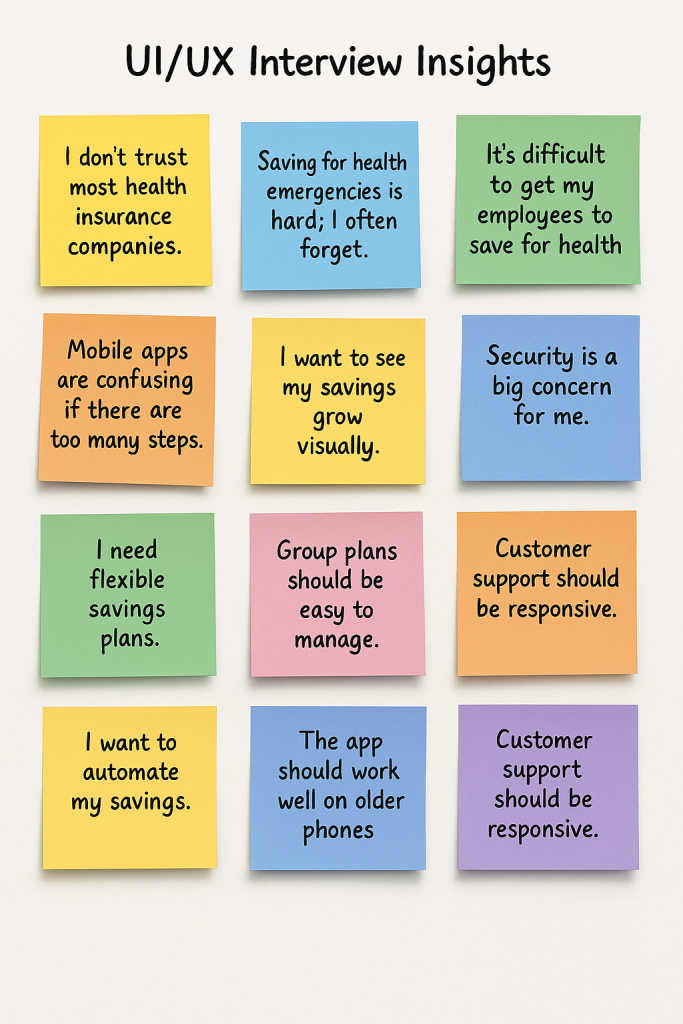
Affinity Diagram
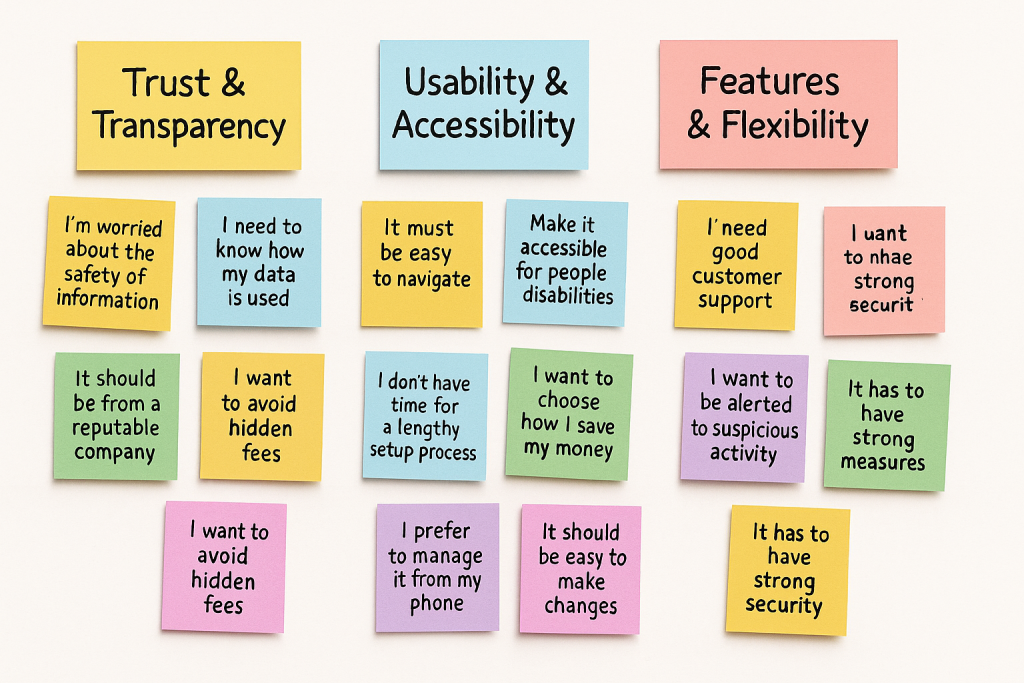
Userflow Diagram
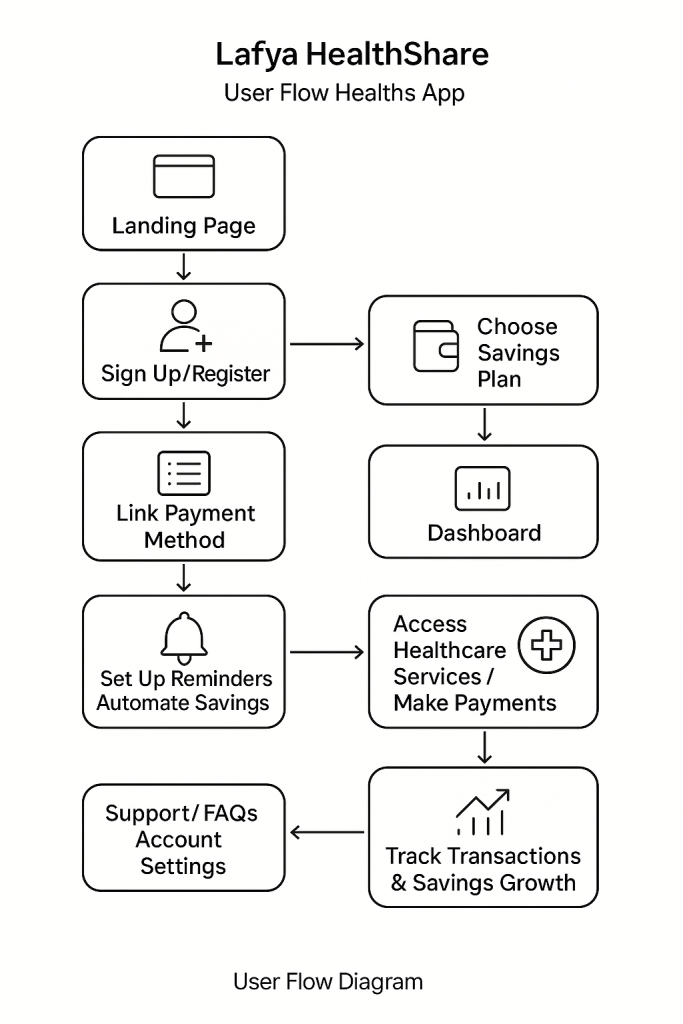
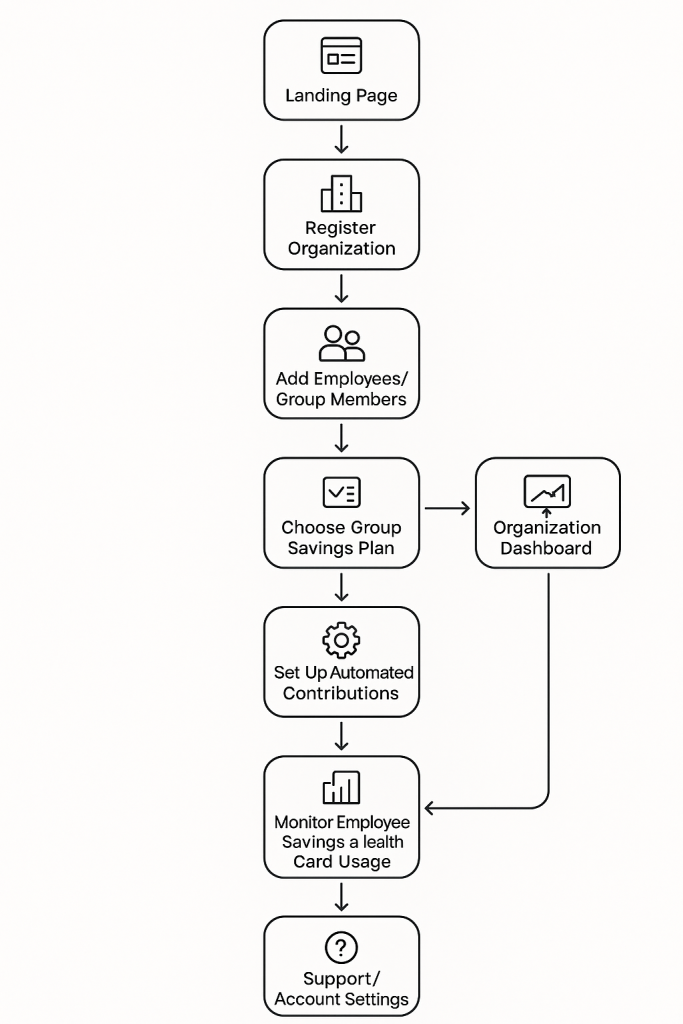
Information Architecture Design
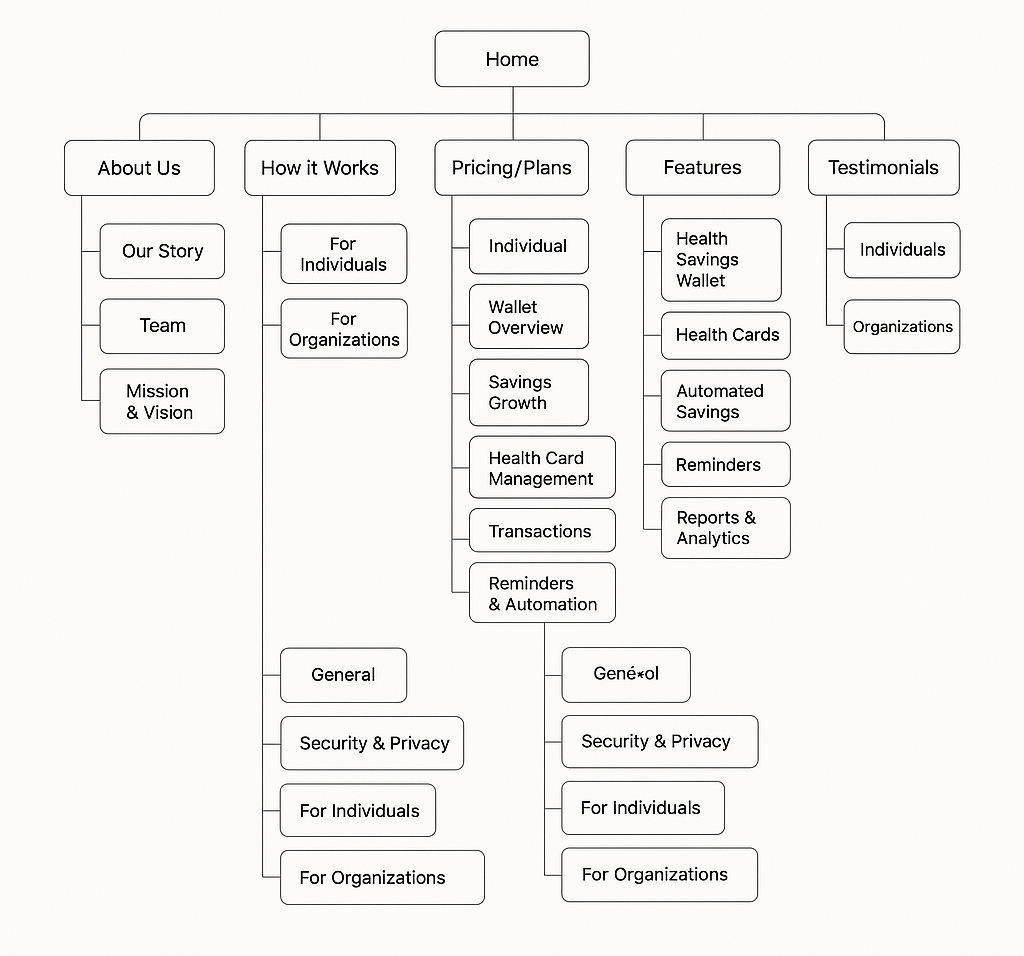
Design System / Style Guide
Hi-Fi Design
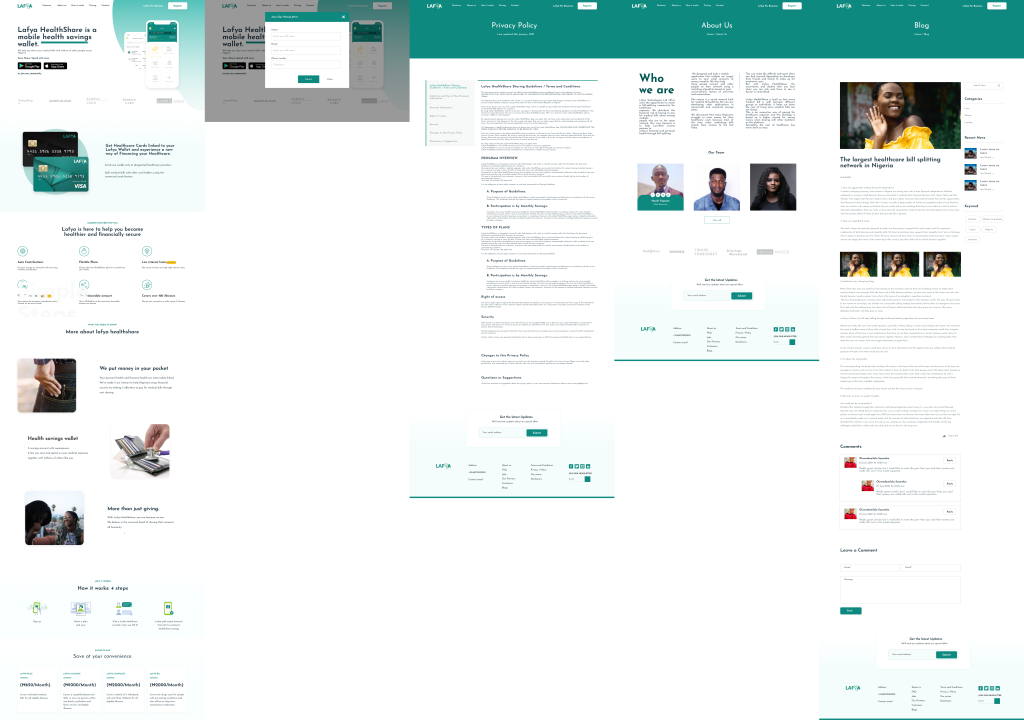
Usability Study and Testing
Method: Remote usability testing with 8 users (individuals and business reps)
Findings:
Users found onboarding intuitive.
Testimonials increased trust.
Some users wanted more info on security.
Improvements:
Added security FAQ.
Enhanced plan comparison section.

Conclusion
The Lafya HealthShare project demonstrates a user-centered approach to solving healthcare financing challenges in Nigeria. The design balances simplicity, trust, and functionality, resulting in a product that empowers users to take control of their health expenses.
BidBuddyapp – Gamifying Ecommerce
UI, UX Design, Mobile
Shecluded - Female Exclusive Loan Product
UI, UX Design, Web


